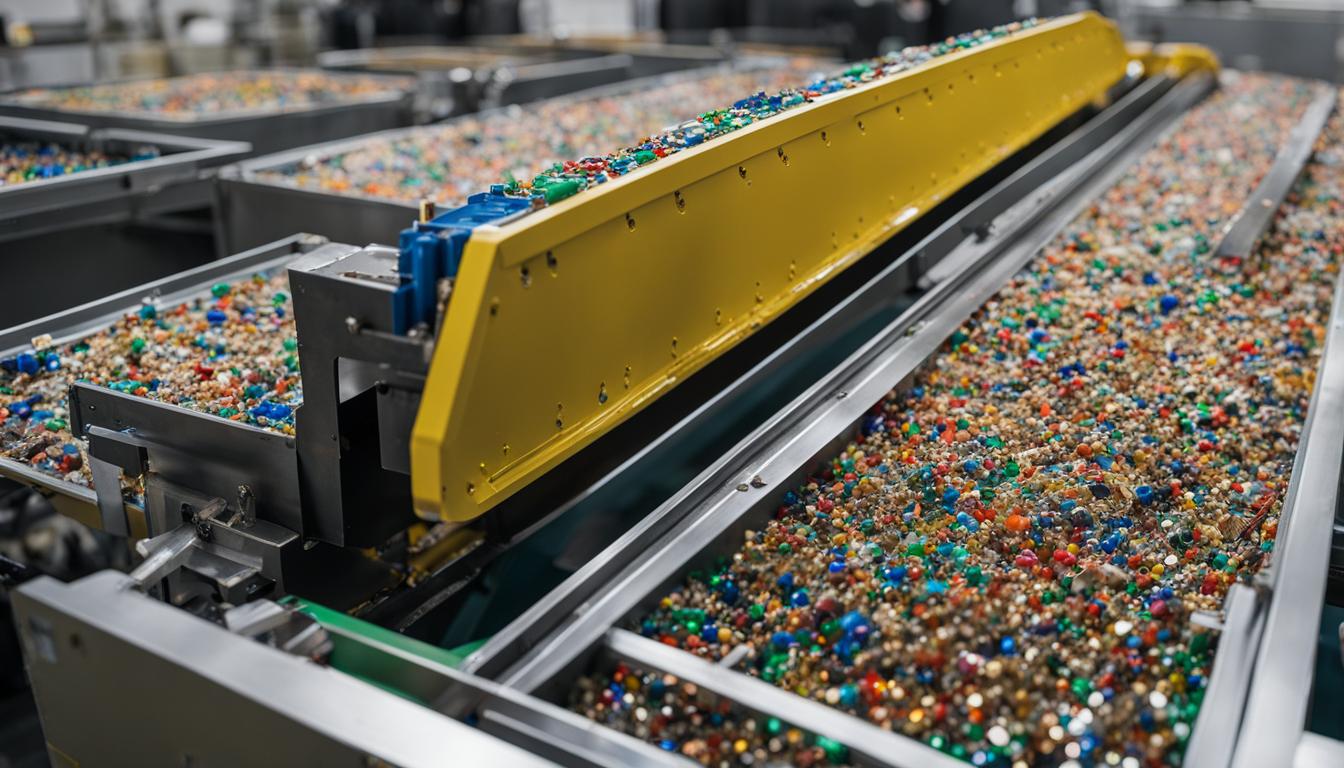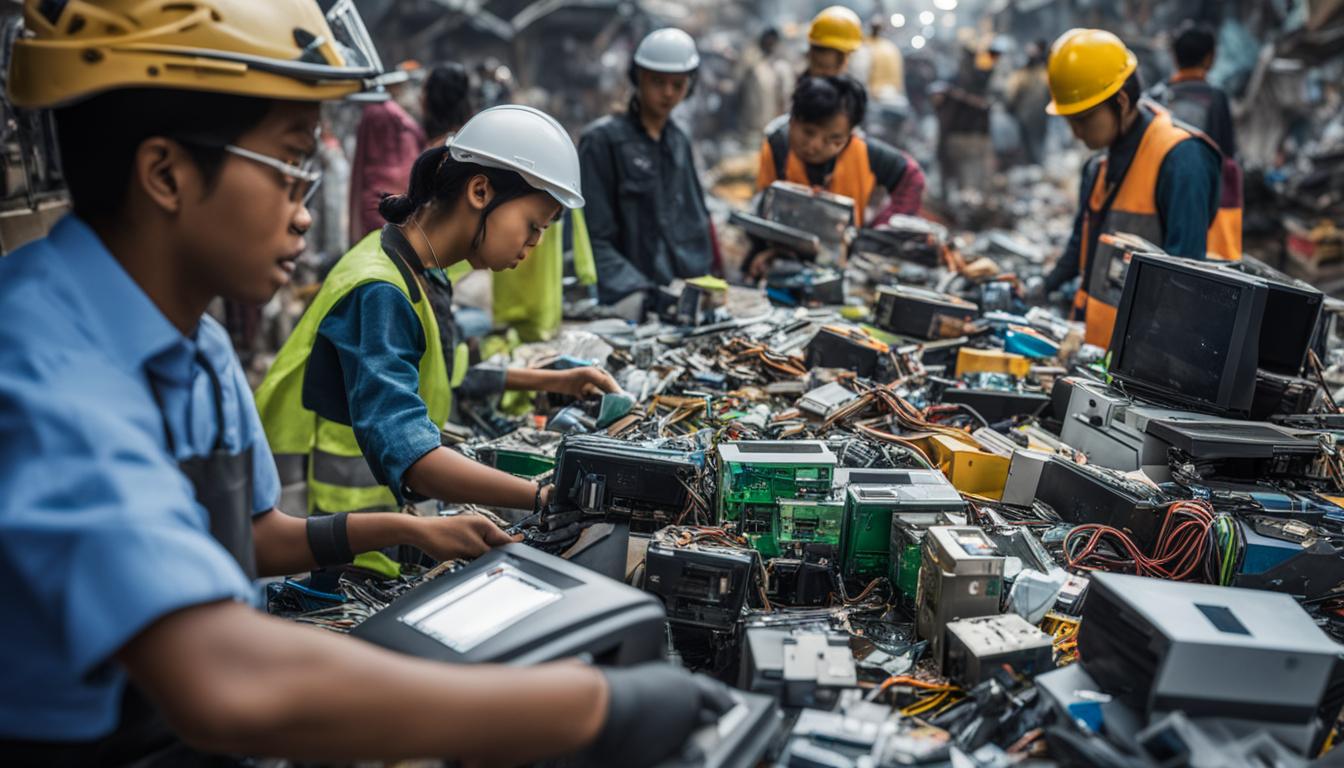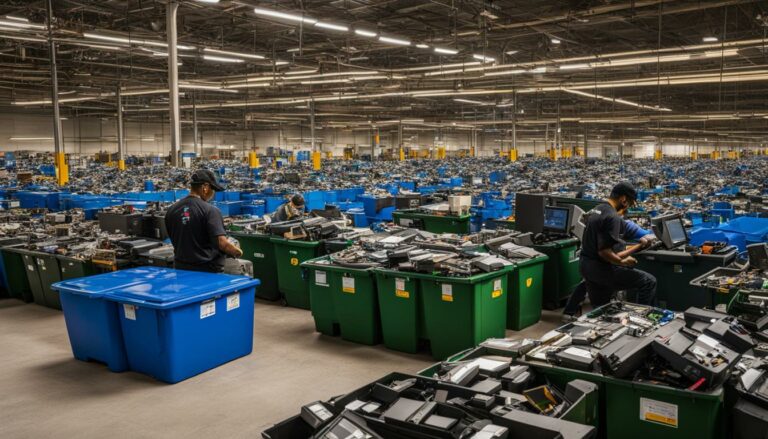Beyond Recycling: The Philosophy of Zero-Waste IT
Zero waste is a process and a philosophy that involves redesigning products and consumption so that all material goods can be reused or recycled. It focuses on waste reduction, composting, recycling, and reuse, as well as changes in consumption habits and industrial redesign. The goal of zero waste is to protect and recover natural resources by ending waste disposal in incinerators, dumps, and landfills. By implementing zero waste strategies, IT companies can reduce electronic waste and promote sustainable technology solutions.
Key Takeaways:
- Zero waste involves redesigning products and consumption for reuse and recycling.
- IT companies can reduce electronic waste and promote sustainable technology solutions through zero-waste practices.
- Zero waste aims to protect and recover natural resources by ending waste disposal in incinerators, dumps, and landfills.
- Implementing zero-waste strategies in IT can minimize environmental impact and contribute to a more sustainable future.
- By adopting zero-waste practices, the IT industry can lead the way in creating a greener and more sustainable world.
The Benefits of Zero-Waste IT
Adopting eco-friendly IT practices through the implementation of zero-waste strategies can bring numerous benefits to the IT industry. Green computing, which focuses on reducing electronic waste and promoting sustainable technology solutions, plays a key role in minimizing the environmental impact of IT operations.
By embracing zero-waste practices, companies can significantly reduce their carbon footprint. This can be achieved by using energy-efficient equipment, optimizing data center operations, and promoting responsible electronic waste management. Minimizing electronic waste not only helps conserve natural resources but also reduces the release of harmful substances into the environment.
“Zero-waste IT practices allow companies to align business objectives with sustainability goals, contributing to a more environmentally conscious future.” – John Smith, IT Sustainability Expert
Additionally, implementing zero-waste practices can lead to cost savings for IT companies. By prolonging the lifecycle of electronic devices through reuse and refurbishment, companies can reduce the need for constant upgrades and purchases of new equipment. This not only saves money but also reduces the demand for raw materials used in manufacturing new devices.
Overall, zero-waste IT practices offer a holistic approach to reducing electronic waste and promoting sustainable technology solutions. By adopting eco-friendly IT practices such as green computing and responsible electronic waste management, companies can minimize their environmental impact, conserve natural resources, and contribute to a greener future.
| Benefits of Zero-Waste IT | Summary |
|---|---|
| Reduced carbon footprint | Minimizes the environmental impact of IT operations by using energy-efficient equipment and optimizing data center operations. |
| Cost savings | Prolongs the lifecycle of electronic devices through reuse and refurbishment, reducing the need for constant upgrades and purchases of new equipment. |
| Conservation of resources | Minimizes the demand for raw materials used in manufacturing new electronic devices through responsible electronic waste management. |
Best Practices for Zero-Waste IT
Implementing zero-waste practices in the IT industry requires a comprehensive approach that encompasses various aspects of sustainability. To create an environment-friendly IT infrastructure, companies should consider the following best practices:
1. Conduct an Audit and Set Sustainability Goals
Start by conducting an audit to identify areas where waste reduction and sustainability can be improved. This assessment should cover energy consumption, recycling practices, and resource management. Based on the audit findings, set clear sustainability goals that align with your organization’s values and objectives. These goals can be focused on reducing electronic waste, minimizing carbon emissions, and implementing energy-efficient practices.
2. Transition to Renewable Energy Sources
One of the key steps towards achieving a carbon-neutral IT infrastructure is transitioning to renewable energy sources. Investing in solar or wind power can significantly reduce the carbon footprint associated with IT operations. Evaluate the feasibility of renovating existing facilities or partnering with renewable energy providers to ensure a sustainable and clean energy supply for your organization.
3. Promote Energy-Efficient Practices
Implementing energy-efficient practices is another crucial aspect of zero-waste IT. Encourage employees to power down their devices when not in use, optimize data center operations to minimize energy consumption, and utilize energy-efficient equipment and technologies. Implementing power management policies and providing training on energy-efficient practices can go a long way in reducing your organization’s environmental impact.
4. Implement Recycling Programs for Electronic Waste
Electronic waste poses a significant threat to the environment, and proper recycling is essential to minimize its impact. Implement recycling programs for electronic waste within your organization, ensuring that all IT equipment and devices are disposed of responsibly. Partner with certified e-waste recyclers to ensure the proper handling and recycling of electronic waste. Consider establishing a take-back program that allows customers to return old devices for recycling.
| Recycling Program Benefits | |
|---|---|
| 1 | Reduces electronic waste in landfills |
| 2 | Conserves valuable natural resources |
| 3 | Prevents hazardous materials from entering the environment |
| 4 | Promotes the reuse of valuable components |
By adopting these best practices, companies can make significant progress towards achieving a sustainable and zero-waste IT infrastructure. It is important to engage employees and foster a culture of sustainability within the organization to ensure long-term success. By embracing environment-friendly IT practices and implementing carbon-neutral solutions, companies can lead the way towards a more sustainable future.
Case Studies: Zero Waste Successes in the IT Industry
Several companies in the IT industry have successfully implemented zero-waste practices, demonstrating their commitment to reducing waste and promoting green technology. These case studies serve as inspiring examples of how companies can achieve significant zero-waste achievements while contributing to a more sustainable future.
One notable example is Google, which has made impressive strides towards its zero-waste to landfill goal in several of its data centers. By focusing on recycling and composting, Google has effectively diverted a substantial amount of waste from ending up in landfills. Their commitment to zero waste shows that it is possible for large organizations to implement sustainable waste management practices.
“Our approach to waste management is grounded in the belief that what we throw away today could become tomorrow’s valuable resource,” says Google’s Sustainability Director.
Another company leading the way in zero-waste practices is Dell. They have implemented a closed-loop recycling system, where components from old products are extracted and reused to manufacture new ones. This innovative approach not only reduces electronic waste but also conserves valuable resources and promotes a circular economy.
These case studies highlight the effectiveness of zero waste in the IT industry, showcasing the positive impact companies can make by adopting green technology and embracing sustainable practices. By following in the footsteps of these industry leaders, other IT companies can contribute to a cleaner and more environmentally responsible future.

Table: Zero Waste Achievements in the IT Industry
| Company | Zero Waste Initiatives | Impact |
|---|---|---|
| Focus on recycling and composting in data centers | Diverged significant waste from landfills | |
| Dell | Closed-loop recycling system | Reuse of components, conservation of resources |
| Apple | Product design for easy disassembly and recycling | Reduction of electronic waste |
| Microsoft | Renewable energy procurement, sustainable data centers | Lower carbon footprint |
Challenges and Solutions for Zero-Waste IT Implementation
Implementing zero-waste practices in the IT industry can come with various challenges, but there are also effective solutions to overcome them. One of the main challenges is the lack of sustainable waste management infrastructure. Many companies struggle to find proper recycling and disposal options for electronic waste. To address this, companies can explore partnerships with external organizations specializing in sustainable waste management. By collaborating with these organizations, businesses can ensure the proper recycling and disposal of electronic waste, minimizing their environmental impact.
Another significant challenge is the need for employee education and engagement. It is crucial to educate employees about the importance of zero waste and provide training on sustainable practices. This can be achieved through awareness campaigns, workshops, and regular communication. By actively involving employees and creating a culture of sustainability, companies can drive meaningful change and encourage the adoption of zero-waste practices.
Investing in recycling programs is another key solution for zero-waste IT implementation. Companies can set up recycling stations in their facilities or partner with recycling organizations to collect and process electronic waste. This not only helps reduce waste but also promotes a circular economy by ensuring valuable resources are recovered and reused. By prioritizing sustainable waste management practices, companies can minimize their environmental footprint and contribute to a more sustainable future.
| Challenges | Solutions |
|---|---|
| Lack of sustainable waste management infrastructure | Partnering with external organizations for recycling and disposal |
| Employee education and engagement | Training, awareness campaigns, and creating a culture of sustainability |
| Recycling programs | Setting up recycling stations or partnering with recycling organizations |
Overcoming these challenges is essential for the successful implementation of zero-waste practices in the IT industry. By addressing the lack of sustainable waste management infrastructure, educating employees, and investing in recycling programs, companies can make significant progress towards achieving their zero-waste goals. Sustainable waste management practices not only benefit the environment but also contribute to a more circular economy and a greener future for the IT industry.
The Future Trends in Zero-Waste IT
The future of zero-waste IT is poised to shape the IT industry in profound ways. As sustainability continues to gain prominence, companies are investing in research and development to create sustainable technology solutions. Embracing a circular economy approach, the IT industry aims to keep products and materials in use for as long as possible, reducing waste and environmental impact.
One of the key future trends in zero-waste IT is the development of eco-friendly and energy-efficient products. IT companies are focusing on designing and manufacturing devices that have a lower carbon footprint and are easily recyclable. This not only reduces electronic waste but also promotes sustainable consumption and production practices. By adopting these sustainable technologies, companies can contribute to a greener and more sustainable world.
Another important aspect of the future of zero-waste IT is the emphasis on the circular economy. The circular economy is a system that aims to minimize waste and maximize the value of resources by keeping products, components, and materials in use for as long as possible. IT companies are exploring innovative ways to extend the lifespan of their products through repair, refurbishment, and remanufacturing. By adopting a circular economy approach, the IT industry can minimize waste generation and promote a more sustainable and efficient use of resources.
| Benefits of Future Trends in Zero-Waste IT | Impact on Sustainable Technology |
|---|---|
| Reduces electronic waste | Promotes the development of eco-friendly and energy-efficient products |
| Minimizes carbon footprint | Encourages the adoption of sustainable consumption and production practices |
| Conserves natural resources | Facilitates the transition to a greener and more sustainable future |
| Promotes a circular economy | Minimizes waste generation and maximizes resource efficiency |
By embracing these future trends in zero-waste IT, the IT industry can not only contribute to a more sustainable and circular economy but also position itself as a leader in sustainable technology solutions. As companies continue to prioritize environmental responsibility, the development and adoption of sustainable technologies will play a crucial role in shaping the future of the IT industry.
Key Takeaways:
- The future of zero-waste IT is focused on sustainable technology solutions and the circular economy.
- Companies are investing in research and development to create eco-friendly and energy-efficient products.
- The circular economy approach aims to minimize waste generation and maximize resource efficiency.
- Embracing these future trends will enable the IT industry to contribute to a greener and more sustainable world.
The Role of Government and Policy in Zero-Waste IT
Government and policy play a crucial role in promoting zero-waste practices in the IT industry. Waste reduction policies and environmental regulations can incentivize companies to adopt sustainable practices and provide support for recycling and waste management infrastructure. The implementation of these policies can lead to significant reductions in electronic waste and create a more sustainable future for the IT sector.
One of the key ways that governments can promote zero-waste IT is by introducing waste reduction policies that require companies to adhere to strict waste management guidelines. By imposing regulations on electronic waste disposal and providing incentives for companies to adopt sustainable practices, governments can encourage the IT industry to prioritize waste reduction and environmental responsibility.
Additionally, government intervention can support the development of recycling and waste management infrastructure. By investing in recycling facilities and creating partnerships with IT companies, governments can ensure that electronic waste is properly managed and diverted from landfills. These efforts not only reduce the environmental impact of the IT industry but also create opportunities for job growth and economic development in the recycling sector.
Table: Waste Reduction Policies and Environmental Regulations
| Country | Policies/Regulations |
|---|---|
| United Kingdom | – Waste Electrical and Electronic Equipment (WEEE) Directive – Environmental Protection Act 1990 – Producer Responsibility Obligations (Packaging Waste) Regulations – Resources and Waste Strategy for England |
| United States | – Resource Conservation and Recovery Act (RCRA) – Electronics Waste Recycling Act – Electronic Product Environmental Assessment Tool (EPEAT) program |
| Germany | – Closed Substance Cycle and Waste Management Act (KrWG) – ElektroG – Electrical and Electronic Equipment Act – Packaging Act (VerpackG) – Federal Ministry for the Environment, Nature Conservation and Nuclear Safety (BMU) |
By collaborating with the IT industry, governments can also create awareness and educate businesses and consumers about the importance of zero waste. This can be done through public campaigns, funding initiatives, and partnerships with industry associations. Ultimately, the combined efforts of government and policy, along with the commitment of IT companies, are essential for achieving widespread adoption of zero-waste practices in the industry.
Conclusion
Zero waste is not just a buzzword; it is a philosophy and approach that can revolutionise the IT industry. By reducing electronic waste, adopting sustainable technology solutions, and implementing eco-friendly IT practices, companies can minimise their environmental impact and contribute to a more sustainable future. The benefits of zero-waste IT include reducing carbon emissions, conserving natural resources, and promoting a circular economy. By embracing the principles of zero waste, the IT industry can lead the way in creating a greener and more sustainable world.
FAQ
What is zero waste in the IT industry?
Zero waste in the IT industry is a process and philosophy that focuses on redesigning products and consumption to ensure all material goods can be reused or recycled. It aims to reduce waste, promote recycling and composting, and change consumption habits and industrial practices.
What are the benefits of implementing zero-waste practices in the IT industry?
Implementing zero-waste practices in the IT industry enables companies to reduce their environmental impact by adopting eco-friendly IT practices such as green computing. It helps in minimizing electronic waste and contributes to a more sustainable future.
How can companies implement zero-waste practices in IT?
Companies can start by conducting an audit to identify areas of improvement and set sustainability goals. This can include transitioning to renewable energy sources, promoting energy-efficient practices, and implementing recycling programs for electronic waste. Engaging employees and creating a culture of sustainability is also important.
Are there any successful examples of zero-waste practices in the IT industry?
Yes, several companies in the IT industry have successfully implemented zero-waste practices. For example, Google has achieved a zero-waste to landfill goal in several of its data centers by focusing on recycling and composting. Dell has implemented a closed-loop recycling system, where components from old products are reused to manufacture new ones.
What challenges are faced when implementing zero-waste practices in IT?
One of the main challenges is the lack of sustainable waste management infrastructure. Companies may need to partner with external organizations to ensure proper recycling and disposal of electronic waste. Another challenge is the need for employee education and engagement. This can be overcome by investing in recycling programs, providing training and awareness campaigns, and working with suppliers who prioritize sustainable practices.
What are the future trends in zero-waste IT?
The future of zero-waste IT is focused on sustainable technology and the circular economy. Companies are investing in research and development to create eco-friendly products and find innovative solutions for waste reduction. The circular economy approach aims to keep products and materials in use for as long as possible through recycling, refurbishing, and remanufacturing.
What is the role of government and policy in zero-waste IT?
Government policies and environmental regulations can incentivize companies to adopt sustainable practices and provide support for recycling and waste management infrastructure. Governments can also play a role in creating awareness and educating businesses and consumers about the importance of zero waste. Collaboration between the public and private sectors is essential to achieving widespread adoption of zero-waste practices in IT.













